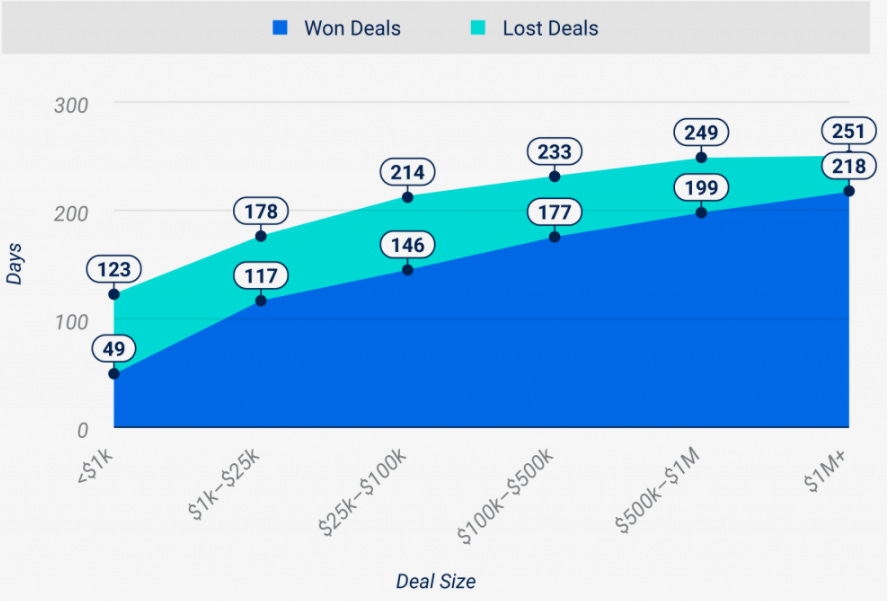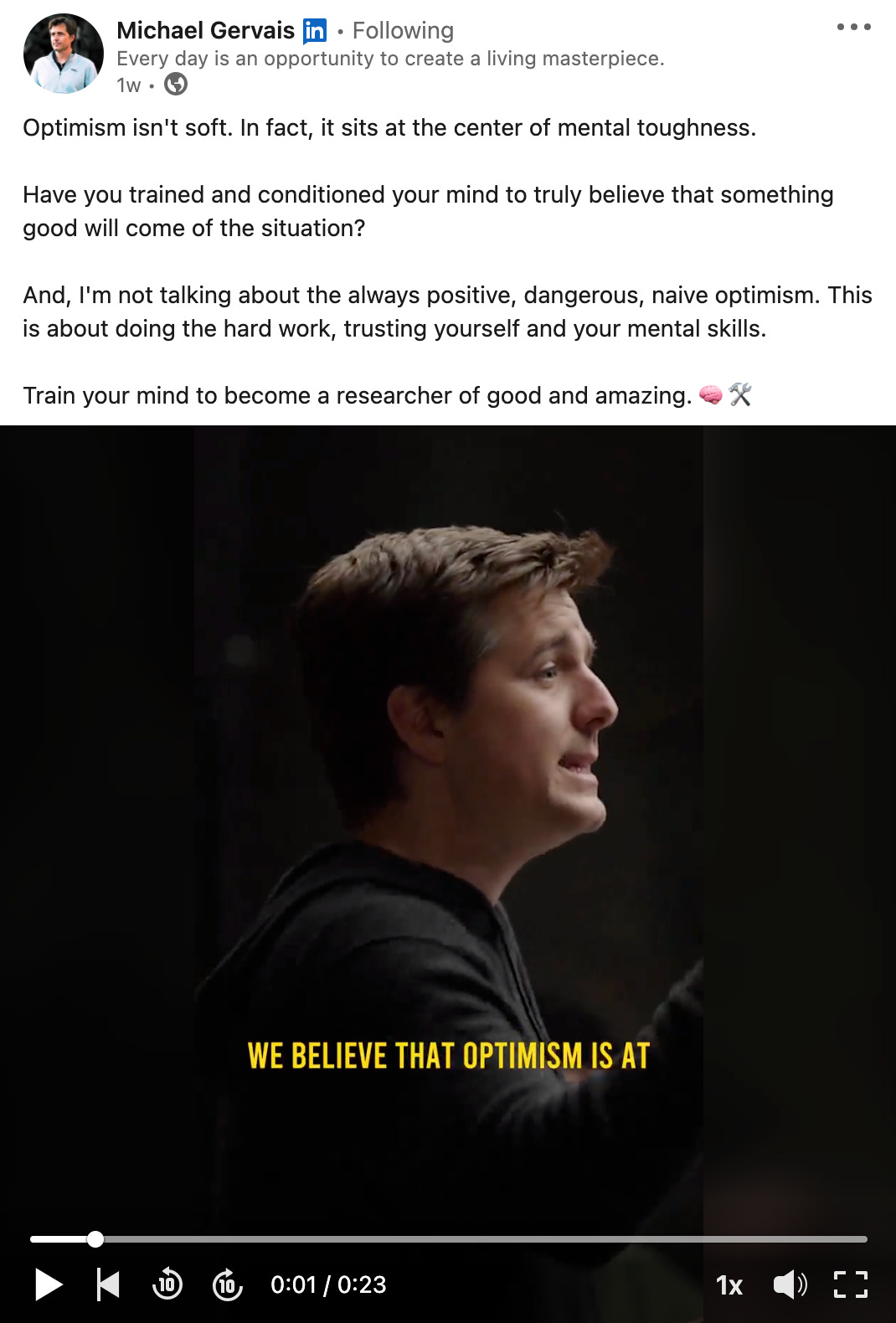Spinning Wheels or Closing Deals?
Learning which deals are likely to close and which ones to let go
When to walk away…
It’s something we all see and have struggled with as sellers ourselves. It’s even more clear as a leader than when we are knee-deep in the mix.
But identifying - and walking away from bad deals is crucial to a seller’s success. And the sooner you can learn to identify which deals to focus on and which ones to let go of, the quicker you’ll get to quota.
In this week’s edition of Stretch Weekly -
Jeb Blount Jr talks about learning when to walk away from bad deals and using micro-commitments to keep things on track.
People.ai presents data from over 500k deals on how we can more effectively gauge whether a deal is likely to close or not.
Plus specific snippets this week to help you spin less, and win more deals.
THANKS for reading!!
-Grant
And lastly - as always, if you find this newsletter valuable- subscribe or share it with someone who might as well 👊.
STRETCH SHARES
When to Walk Away From Bad Deals
Jeb Blount Jr has obviously learned a thing or two from his father in this insightful post about knowing when to walk away from bad deals and using “micro-commitments” to gauge whether you should spend time with a prospective buyer and if you are on the right path.
JJ’s top 5 ways to test your deal:
Ask for a commitment to a next meeting
Ask for a facility tour (with Covid - I’d argue this could be labeled as walking you through decision and paper process to buy software)
Ask for an agreement to send all necessary info by a set date (Closing plan?)
Ask for a follow-up meeting for a proposal
Are they showing up to scheduled calls (Zoom/Phone)?
Where Deals Are Lost
People.ai analyzed data from 512,740 deals ranging in size from $1,000 to more than $1 million to determine when in the process deals break down and how you can more effectively gauge whether a deal is likely to close or not.
Great findings here to help you benchmark against other SaaS companies in your same ACV/Size range, with some good tips to help win more deals.
Few key takeaways:
Deals that are eventually lost drag on 38% longer than those that are won. That averages 57 days longer to even realize it’s a bad deal and move on.
Set a reminder to self-evaluate deals at least 30 days before the typical expiration date (Average Sales Cycle for your ACV).
More emails = More Wins. Lost Deals have 29% fewer email exchanges than deals that were won. (Meeting agendas, Recap emails, CTA all help with pushing this forward)
Meetings Matter Most. Deal size increases with the number of meetings required to win deals. More meetings = More Wins.
No Stakeholder = No deal. In fact, the more people you engage per deal, the more likely you are to win. Each person engaged increases the win rate by 4.5%!
STRETCH SNIPPETS
☠️ Allowing your sales team to keep dead deals in your CRM is like staying connected to your Ex-Boo’s Instagram and watching them be happy with someone else says Richard Harris.
He continues “I always suggest if the deal is in your pipeline more than 2x the average sales cycle, kill it out of there. Unless you have a note from the Pope.”
🗣 According to Justin Welsh, the 2nd biggest difference between success & failure is persistence. The biggest difference between success & failure? Getting started.
While not a sales-focused post, read these 20 helpful lessons for success under the lens of a seasoned sales leader talking with a newer sales rep. Lots of great words of wisdom here.
⚾️ Charles Muhlbauer shares a good example of how to use a ballpark range when addresses pricing questions to move towards further discovery - or qualify out.
"This at least will either help you disqualify someone immediately or just as well as help guide them to what they can and cannot have should they decide they want to work with you.”
🤔 According to Jonah Berger and Wharton, follow these four proven tactics for helping guide people to make the choice you prefer:
1. Provide a menu. 2. Ask, don't tell. 3. Highlight a gap. 4. Start with understanding.
✅ When is the most optimal time to close a deal? Mor Assouline says the beginning, not the end of a demo/call.
Mor says when you get early on "micro-commitments," in a demo, you're more likely to succeed at closing the deal at the end.
🧠 Mindset
Thanks for reading!
My hope is if you find this valuable, consider sharing it with friends (or signing up if you haven’t already).
— Grant 👋
About stretch vp: confessions, learnings, and insights from sales leaders in SaaS
Compiled and aggregated from a network of sales leaders in SaaS, Stretch VP showcases learnings, insights, and experiences as well as best practices to overcome common hurdles, obstacles, and setbacks in your quest for excellence as a sales leader in SaaS.
Are you a VP, Director, thought leader, or content producer in the SaaS space? We’d love to have you contribute. Contact Me HERE.
Also… check out the blog or follow on Twitter







